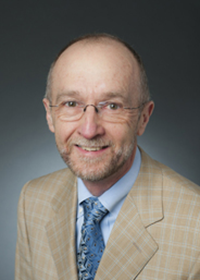
Mason Engineering Senior Associate Dean Stephen Nash says it's important to continue to build a sense of community as the Volgenau School of Engineering grows.
What does it mean to be part of the Volgenau School?
Years ago when we were much smaller this question wasn’t so important. Our offices were mostly in a single building, and we had few enough faculty and staff that it wasn’t much of a challenge to get to know all of them. We interacted with each other regularly, so a sense of community was something that needed no cultivation.
Now it is different. We are split between two campuses with a fledgling presence in Korea as well. Even on the Fairfax Campus we are split between four buildings with a 10-minute walk separating the Nguyen building from our outposts at the Krasnow Institute and the new Peterson Family Health Sciences Hall.
Soon we will also be occupying space in the new Potomac Science Center in Occoquan. At the Science and Technology Campus, we’ll be occupying space in two buildings, plus leased space just off campus. With all these locations, casual interactions among all of our faculty and staff are not going to happen.
The rapid growth of our school is accompanied by rapid hiring. This makes it hard to get to know everyone in the school. As each of us walks around, we are likely to encounter unfamiliar faces. The individuals in the more distant locations are not going to be much more than names, and perhaps we won’t even have that level of familiarity.
If you add in the students, it is an even greater challenge. We’ll have about 8,000 students in the fall. I know a good number of the PhD students, but my knowledge quickly deteriorates beyond that.
Is this a problem?
One response is to say that it doesn’t matter. As a school, we try to hire good people and provide them with opportunities. Perhaps our hiring goals and selection process provide enough focus. Then if the new hires are successful, we are all successful. What more is needed?
I would argue that having a sense of community is important. As a school we would like to address major challenges that are critical to our region and the world. These challenges are complex and interdisciplinary, and require teams of people working in consort.
We believe it is important for our students to have the necessary training and experience to work on these problems when they graduate.
We want them to have the necessary technical skills, but we also want them to have the ability to work together and to communicate, as well as the judgment to identify what problems to solve. I think that it is hard to build these synergies and pursue these values without a shared sense of community.
As we grow, building a community becomes harder. Our shared vision has to be developed within our various organizations, and that effort has to be distributed across our school, in individual locations as well as in individual departments and research groups. This isn’t a project for one person.
Last week, Martha Bushong and I met with Liza Wilson Durant, the school’s Associate Dean for Strategic Initiatives and Community Engagement. Liza will be overseeing communications and marketing in the school when I step down in a few weeks.
The question of shared community was part of our conversation. I don’t know how Liza will address these issues, but I know that answering these questions will play a major role as she takes on these new responsibilities.
